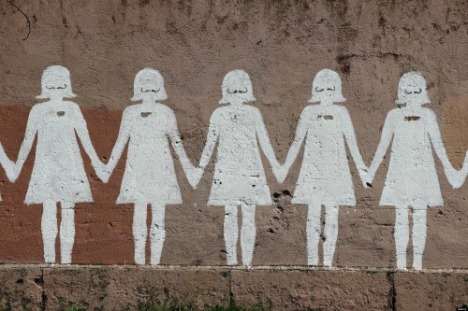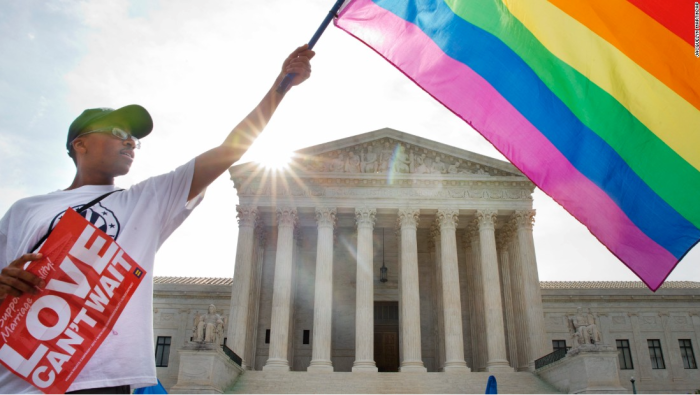By Kaileen McGourty

The feminist movement has never been unanimously popular – whether due to honest disapproval of gender equality, like that experienced by the Suffragettes, or a disbelief that feminism is still necessary today. And that’s why I’m writing this article, because of the recently blooming opinion that we don’t need feminism anymore. There are a significant number of people in this country, and possibly throughout the world, who believe that we ended sexism and gender discrimination (Yay! We did it apparently!) and therefore see feminism as redundant or even causing victim-hood among women. But that’s simply false. Discrimination based on sex is still very present in the US (and the rest of the world); those who do not see it either aren’t women or aren’t looking very hard. A good way to expose the ever-present sexism in our society is to examine dominant versus popular culture.
Dominant Culture
Let’s being with a definition. The dominant culture is made up of established societal aspects like language, rituals, or social customs. These aspects maintain dominance through institutions like the education system, law, politics, and business. This is the layer of society where first and second wave feminism focused – attacking where the most obvious and detrimental acts of gender discrimination existed at the time. The lack of women’s right to vote or own property, unjust pay, discriminatory educational practices, and workplace sexual harassment all were obstacles in the dominant culture. As a result of strong feminist efforts, we have seen great improvement in this sphere of society – this is what some are referencing when they claim that feminism is no longer necessary. Women won the right to vote and hold land. Laws punishing sexual harassment and encouraging workplace safety have come into effect. Title IX was created to insure educational institutions treat female students equally.
But have we really improved gender discrimination in the dominant culture as much as some may think? Let’s say we’re going to measure the presence of gender discrimination in dominant culture with wages. Over time, in the U.S. it is very clear that the average wage for women has moved closer and closer to that of men (see the graph below). However, we’ve yet to actually reach wage equality. As Harvard economist Claudia Goldin explains, if you calculate the average annual earnings of all full-time working women and divide that by the equivalent calculation for men the result would be around .77 – meaning, on average, women earn 77% of what men earn. So we can’t quite say there is gender equality in pay yet.

But is this a fluke? Let’s try a different measure. How about the portion of political positions held by women? According to the World Bank data-bank, in 1990 women held a mere 6.6% of political seats in the U.S. and as of 2015 women held 19.4%. That is a huge improvement across time; however that number pales in comparison to the other one-hundred and eighty nine reporting countries in 2015. Ranking from highest percentage to lowest, the U.S. finds itself, just barely in the top 50%, at number 96 – below countries like Saudi Arabia, Iraq, Pakistan, Afghanistan, Sudan, South Sudan, Uganda, Kenya, nearly every “developed” country, and many more. So, sadly, we can’t claim political gender equality either.
Popular Culture
We have to accept that our country has not reached gender equity in dominant culture. That does not mean we’ll forget the huge improvements women have seen in our country’s history – something both genders should be proud of. But there seems to be a final obstacle preventing real equality and an end to gender discrimination. I believe that it’s the sexist foundations of popular culture standing in the way. Popular culture is more than the who’s who and what’s what. It’s defined as the sum of attitudes, beliefs, ideas, and values within the mainstream or dominant culture. It’s the culture of how we interact and what we believe. This is where those who believe sex discrimination has vanished lack an understanding or haven’t connected the dots, so to speak. Our popular culture is built upon the sexist cornerstone that women are not equal to men – this holds back gender parity in dominant culture and perpetuates potentially harmful attitudes. These attitudes account for things like street harassment and catcalling, “mansplaining”, and even rape culture. Let me give a few examples:
I asked twenty women I know, all of different ages, sizes, and locations, a question: how many days out of the week do you experiencing catcalling or other forms of street harassment? Accounting for how many days they actually walk on the street or use public transportation, on average they experienced some sort of harassment approximately 5 out of 7 days – and that’s not considering how many times it happened each day! And if you don’t believe me, ask the women in your life.
I am a huge hockey fan (go Blackhawks!), probably more knowledgeable on the topic than the average fan. But I cannot count with all my digits the number of times a man has tried to explain rules or aspects of hockey to me, based purely on the assumption that because I am a female I must not know about sports. Nor can I count the number of times someone, knowing my academic and professional experience, began explaining topics in my field of expertise because the intelligence of women is constantly challenged in our culture.
While those examples may seem harmless, and on the surface they mostly are, they are representative of a dangerous attitude – what women know, want, or say doesn’t really matter. And when that attitude gets applied to something more complicated than hockey knowledge, like sexual consent for example, heinous violations of women occur.
If you still aren’t sure that our popular culture is built on a foundation of gender discrimination I have a dare for you: in this awards season, watch all the red carpet (whatever color carpet) interviews. The presence of sex discrimination is thinly veiled at these events and is most apparent when comparing how male artists and female artists are interviewed. Compare the types of questions – are women being asked about their love life or beauty regime, while men are asked about their role preparation or inspiration behind a song? Of course, you already know the answer. This type of sexist interviewing goes undisguised in every sphere of pop culture, just watch how absurd the questions for female athletes are in this video by #CoverTheAthlete.
So What?
The reason I had to tell you all this? Gender discrimination is not done. Women are still fighting everyday to be treated with respect and equality. Our culture still does not truly value women’s intelligence, work, sexuality, or opinions. While our dominant culture has made great strides in the past towards gender equity and the fair treatment of women, society as a whole is being held back by the final obstacles – how we think, how we act, and what we value. To truly reach gender equality and an end to sex discrimination in our dominant culture and in all of society we cannot leave behind a popular culture built upon sexism. We need to rally around feminism and women. We need to examine how our individual participation in popular culture is impacting the existence of sexist attitudes. And we need to say “enough is enough pop culture, get it together!” I think it’s about time.
—–
Kaileen McGourty is a Graduate Student at American University’s School of International Service.








